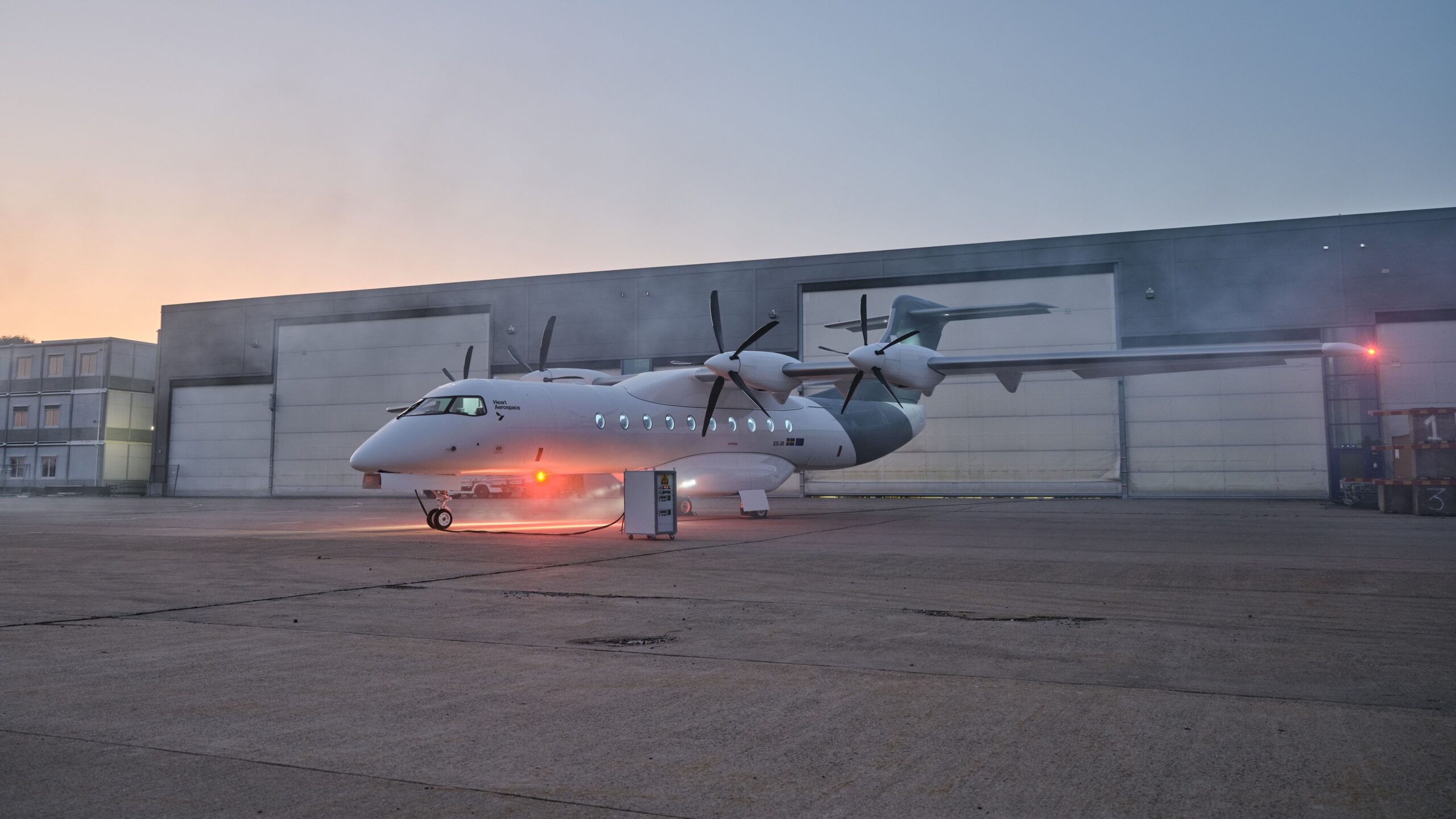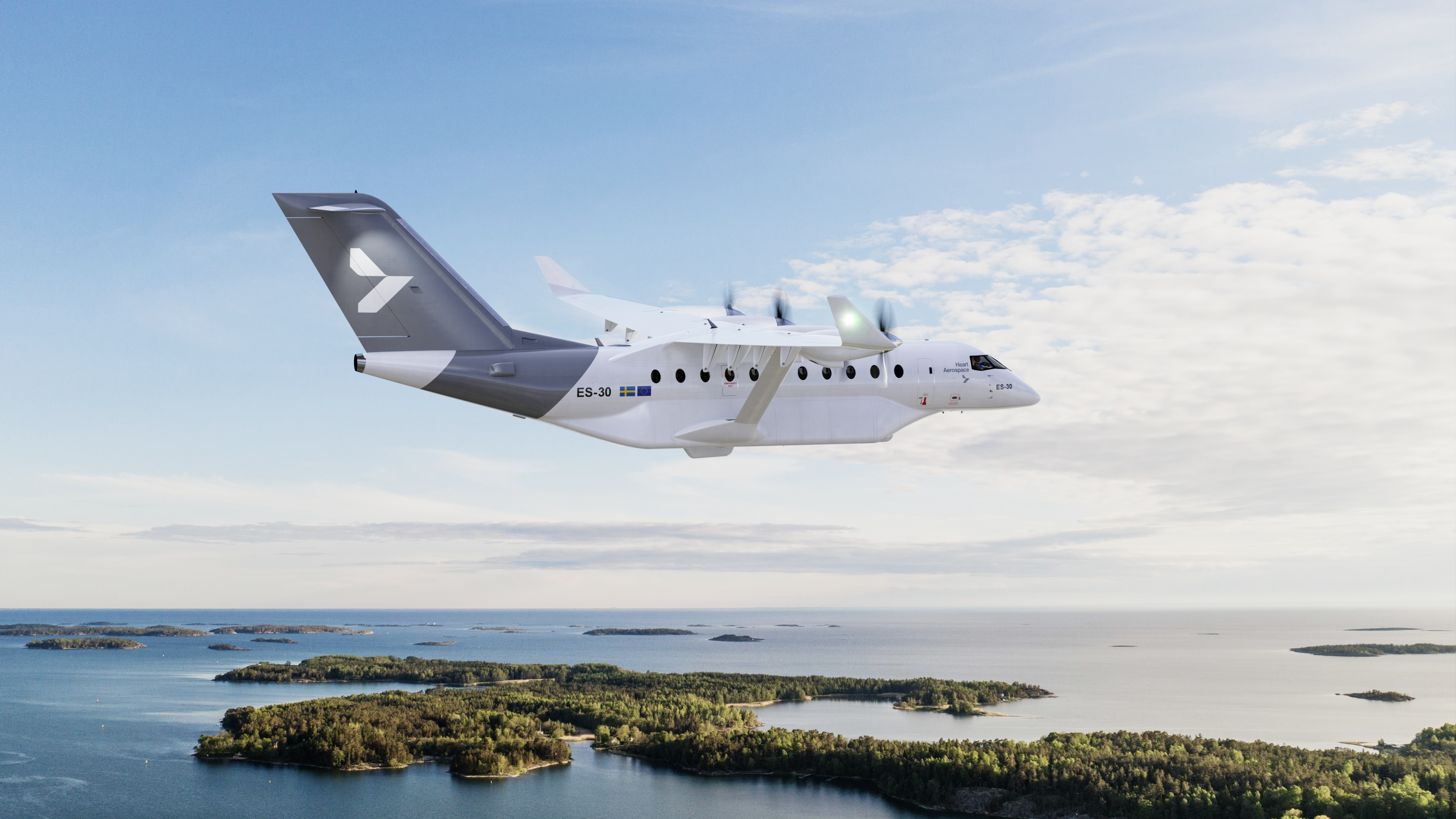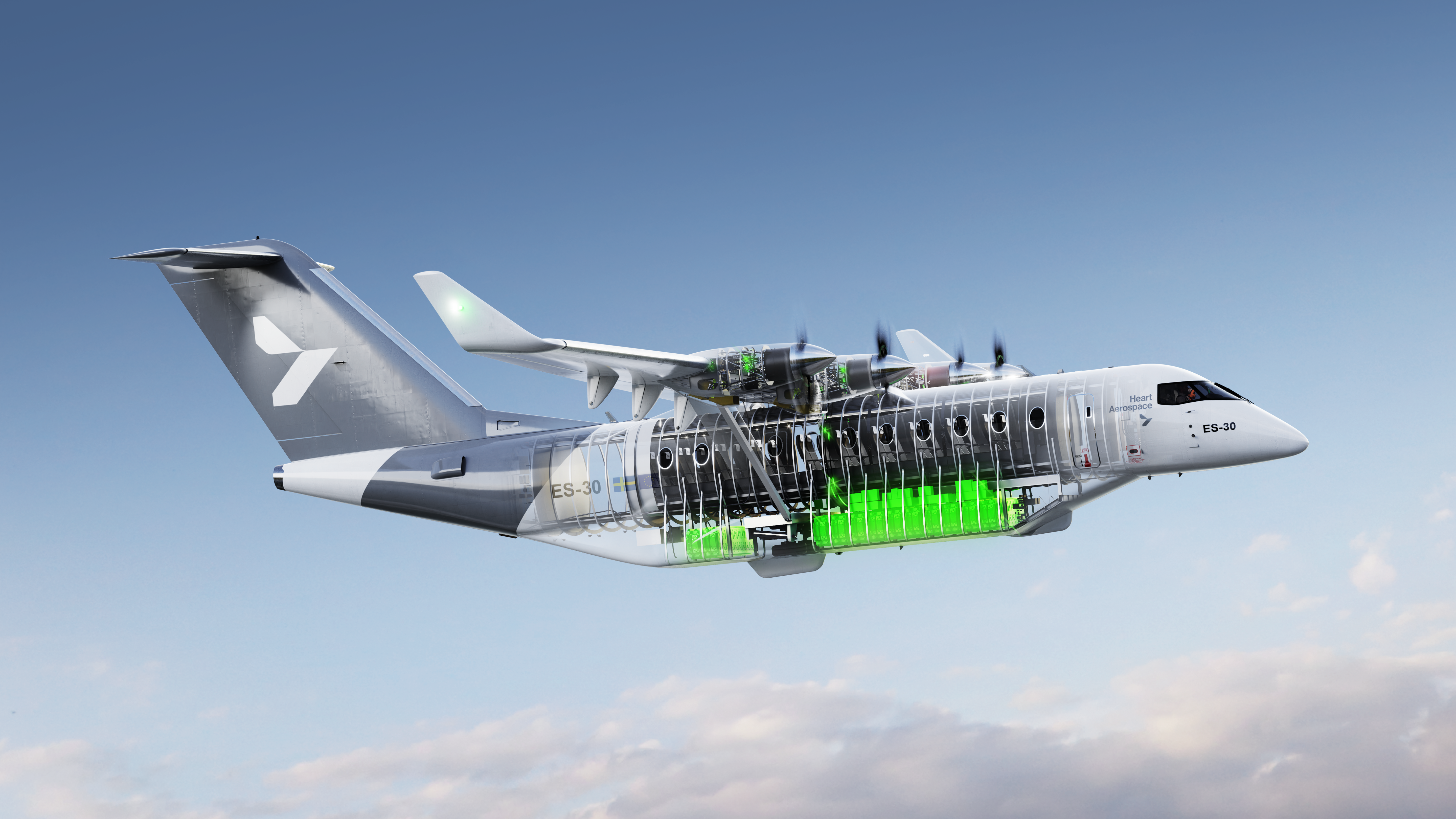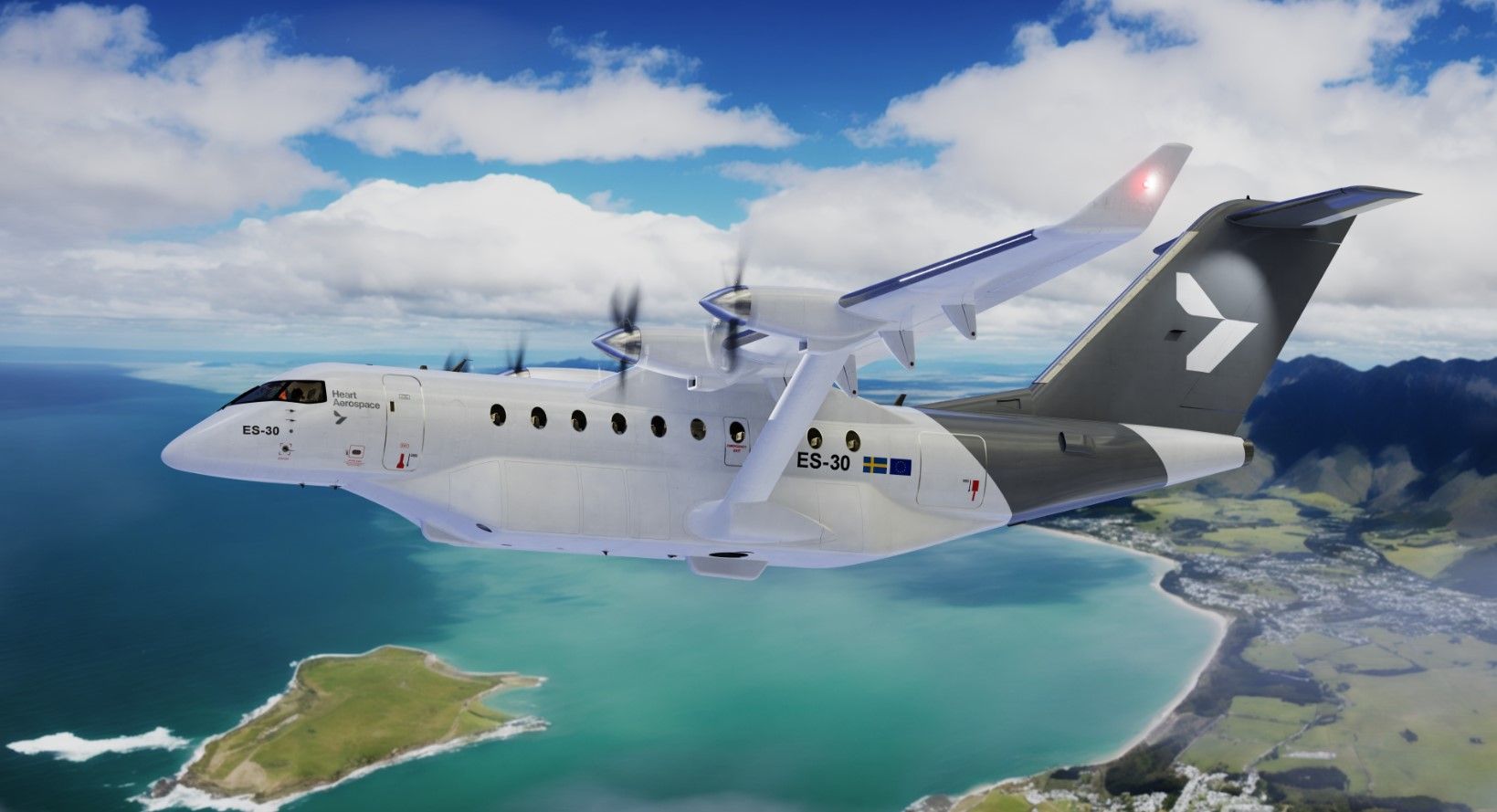Computer renders and model planes are stock in trade for new aircraft proponents, but having a full-scale demonstrator sitting on an airport apron shows that real progress is being made. This week, Swedish hybrid-electric innovator Heart Aerospace rolled out its first ES-30 demonstrator, designated as Heart Experimental 1 (Heart X1), built almost entirely in-house at its Gothenburg facility.
Design and manufacturing progress
Unveiling the first full-scale aircraft marks a significant milestone for Heart Aerospace and the aviation industry’s search for cleaner and greener aircraft. For Heart Aerospace (Heart), it is also a demonstration of its progress both as a designer and a manufacturer of hybrid electric regional aircraft, further cementing it as a highly credible player in this vitally important endeavor.
Photo: Heart Aerospace
HX-1, which has a 32-meter (105-foot) wingspan, will serve as a platform for testing and developing the ES-30, initially focusing on ground-based testing, including charging operations, taxiing and turnaround procedures. While the industry is looking to see how a hybrid aircraft performs, it is equally important that these ground operations are developed in parallel with flight testing.
The aircraft is scheduled to make its first fully electric flight in the second quarter of 2025, and over the coming months, critical systems will be tested by running hardware tests on and off the airplane. The next developmental step is building a pre-production prototype, the Heart X2, which will further mature the design and production methods based on the HX-1 learnings.
HX-1 is an impressive feat
Heart Aerospace co-founder and CEO Anders Forslund said the industry is approaching a 30-year innovation cycle but has only 25 years to decarbonize aviation. In a blunt warning, he adds that the industry needs to develop new methods to get net zero aerospace technologies to market faster.
“It is a testament to the ingenuity and dedication of our team that we’re able to roll out a 30-seat aircraft demonstrator with a brand-new propulsion system, largely in-house, in less than two years.”
Image: Heart Aerospace
The credibility of Heart’s ES-30 project has attracted funds from some impressive sources, including a $4.1 million grant from the US Federal Aviation Administration (FAA). The FAA’s Fuelling Aviation’s Sustainable Transport (FAST) program awarded the grant to develop a management system for hybrid-electric propulsion.
The Swedish Innovation Agency, Vinnova, has also provided grants to Heart, which highlights the importance of government and industry collaboration on the path to net zero aviation. Heart Chief Technology Officer Ben Stabler said that developing net zero and hybrid-electric aviation technologies demands a similar product and manufacturing revolution as seen in the automotive and space industries.
Photo: Heart Aerospace
With the experience and lessons learned from building HX-1, the company is now focused on creating a state-of-the-art manufacturing process that leverages the latest technologies in composite manufacturing and product lifecycle management. In a reassuring tone, given Boeing’s quality problems, Heart is building a data-driven assembly line with high repeatability, automation and non-destructive testing.
On that point, Heart said it would continue establishing a pilot manufacturing plant to “accelerate prototyping toward the manufacturing of a fully conforming aircraft.” The ES-30 is a regional hybrid-electric aircraft capable of carrying 30 passengers with an electric zero-emission range of 200 kilometers (125 miles) and an extended hybrid range of 400 kilometers (250 miles). Heart aims to have the ES-30 type certified by the end of the decade and appears to be well on the way to that target.




